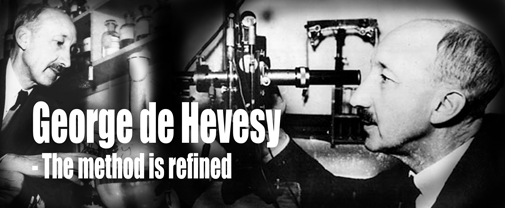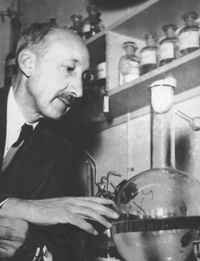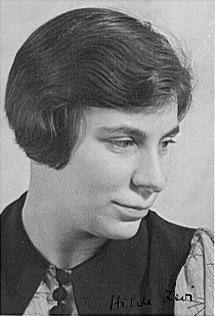The method is refined
After his six-year stay in Copenhagen in the early 1920s, George de Hevesy is offered a job in Germany. However, it is not long before it becomes too dangerous for the Jewish Hevesy. Niels Bohr invites him back to the Institute for Theoretical Physics at the University of Copenhagen to continue research on the tracer technique.

In 1927, George de Hevesy was appointed professor in Freiburg am Breisgau, where he worked until 1934, when he had to leave the Third Reich due to his Jewish background.
Back to Copenhagen
Niels Bohr invited him to Copenhagen again, where he remained and conducted research for nearly 10 years during the period 1935-1943.
It was during his stay at the Niels Bohr Institute that Hevesy refined the tracer method with Ole Chievitz, August Krogh and of course Niels Bohr.

By that time, it became possible to artificially produce useful amounts of radioactive substances, including phosphorus-32 and this meant that the tracer principle could be used much more broadly in biology.
Incredibly primitive instruments
George de Hevesy also got his own assistant, the young German physicist Hilde Levi, who like Hevesy had fled the Nazi regime in Germany. Hilde Levi built Geiger counters based on simple amplifier principles and used the telephone headquarters telecommunications system to record the number of beta particles.

To begin with, they had a neutron source with a mix of radon gas and beryllium powder that could deliver very small amounts of radioactivity. Later, they could produce radioactive phosphorus by bombarding sulphur with neutrons.
These were extremely primitive instruments and today it impressive to think about the revolutionary discoveries the little research group made.
It is quite remarkable that they achieved so much starting from the limited experimental opportunities available at the time.
The first experiment in which radioactive indicators were used for physiological experiments, was an experiment in which phosphorus-32 was injected into rats and tracer was then absorbed into the skeletal system.
Studies in rats showed bones like organs
The article was published in a “letter to the editor”, in Nature. It was submitted in September 1935 with Hevesy and Chievitz as the authors.
After injection into the bloodstream, you could show, using counting setups, that phosphorus-32 was absorbed into the bones and expelled again.
Hevesy’s conclusion of the study was that bone formation is a dynamic process where the bone continuously absorbs phosphorous atoms, loses them again and replaces them with other phosphorous atoms.
It was revolutionary that using this method, you could for the first time show that the bones are a living organ and not just a skeletal frame inside the body.
Short distance from thought to action
The experiments were performed with the help of Ole Chievitz, Bohr’s old classmate who was a surgeon and head of the surgical department at Finsen Institute. Chievitz carried the experimental studies and the animal studies were later expanded to include experiments on rabbits and cats.
It must have taken place very quickly and it a short distance from thought to action. Just half a year after Hevesy arrived in Copenhagen, he had introduced the technique that he had dreamed about for almost 20 years.
|

